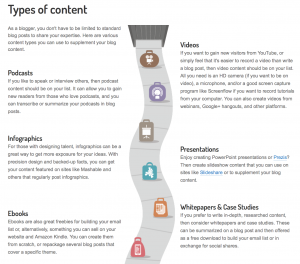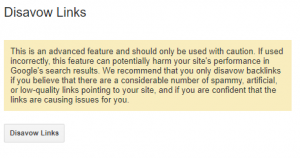
According to recent Gartner research, when B2B buyers are considering a purchase, only 17% of that time is spent meeting potential suppliers. In fact, almost half (45%) of buyers’ pre-purchase period is spent researching independently. So, what does this mean for your upcoming B2B product launch? The extensive pre-purchase research buyers conduct today, especially in the B2B space, presents a rich opportunity to meet your “invisible customers” head-on in their explorations through channels such as digital marketing, pertinent content and tailored messaging.
You can think of your “invisible customers” as just that – B2B customers that are invisible until ready to purchase. Invisible customers are particularly relevant to new products or services that aren’t widely known and supported by a preexisting customer base. In other cases, your invisible customers might still be considering alternative options or don’t recognize how your product relates to their needs. Regardless of the situation, your mission should be to intercept them during their research period and promptly demonstrate how your offering aligns with what they’re looking for.
In this blog, we’ll explore best practices for unearthing your invisible customers with well-researched buyer personas, progressing them through the funnel using strategic content and digital marketing tactics, and supporting both their individual experience and your company’s long-term success through sales and marketing alignment.
Map Out What Your Invisible Customers Look Like
Establishing target profiles prior to launch is essential for identifying your invisible customers’ buying behavior and pain points, as well as executing a more personalized, informed launch overall. Focus groups, 1:1 conversations, open-ended response queries and secondary research are all examples of market data that are invaluable to your initial discovery. Without a reliable blend of quality insights, it’s nearly impossible to reach your B2B customers’ during their research journey.
When you’re building buyer personas for your new product or service, consider these traits and behaviors:
- What channels are your prospects most active on?
- What platforms or websites are they most likely to turn to for product research and reviews?
- Do they appreciate succinct, to-the-point information or descriptive, long-form explanations?
- Does your launch strategy speak to their pain points or appeal to their interests?
Well-formed target profiles are a necessary first step in crafting a launch strategy and long-term vision for your product that not only appeals to your invisible customers, but authentically connects with them at different points throughout their purchase journey.
Support Prospects Throughout Their Research Journey
It is not enough to simply intercept target customers in their quest for a product or service solution. Instead, you must deliver some element of value that correlates to what they’re looking for and consider what stage of the buying cycle they’re in. In supporting their research, you’ll earn rapport and trust with valuable prospective buyers. Two channels you can leverage to support, rather than hinder, your invisible customers’ pre-purchase journey are content and digital marketing.
Content Marketing
When it comes to content marketing, there are a slew of platforms and applications you can employ to communicate with prospective buyers. Rather than going deep in the weeds on a full-blown launch content strategy, a good first step is constructing a plan of attack centered around the three primary B2B buying stages:
- Awareness (top of the sales funnel)
- Consideration (middle of the sales funnel)
- Decision (bottom of the sales funnel)
With these stages in mind, you can begin creating a healthy mix of content on your new product or service that addresses each stage and evolve from there. For example, when looking to build awareness around your new offering, consider starting off with social media posts on the platform your invisible customers are most active on. You can also utilize social media to direct your audience to a more informative blog post that addresses primary pain points followed by actionable solutions. Then, as prospects advance through the funnel, look for opportunities to offer them a free trial of your new product or invite them to attend an interactive demo.
Digital Marketing
Digital marketing is a powerful supplement to launch-focused content marketing as it magnifies your efforts and reiterates them strategically. For instance, consider building awareness with some initial PPC ads that direct prospects to an infographic on key features of your new product or service. Streamline your website experience so prospects can easily locate use cases, important differentiators and sign up for a test-run without skipping a beat. An effortless, user-optimized experience is critical to supporting prospects in their research and eventually accelerating them through to purchase.
Propel Marketing Efforts in Tandem with Sales
The B2B buying cycle is anything but a predictable, linear process that follows a prescriptive order. Instead, it is best described as a long and complex journey riddled with research, deliberation and touchpoints galore. Therefore, synchronicity is an imperative goal for Marketing and Sales teams looking to seamlessly support and convert invisible customers. Without a collective approach, invisible customers will remain just that – undetected and overlooked prospects.
We’ve developed and implemented a variety of sales and marketing alignment best practices, but at the early launch stages, those methods can be distilled into three primary takeaways:
- Lock down agreed-upon qualifications of buyer personas
- Normalize consistent and transparent communications including collaboration meetings, regular updates and intermittent brainstorms
- Track progress with standardized metrics for success
When it comes to understanding, engaging and converting your invisible customers, an approach equally as integrated as the B2B buying cycle is fundamental for an effective launch. Once you prioritize engaging your invisible customers authentically and strategically, you are well on your way to building lasting relationships and long-term customers for your company.
Business & Finance Articles on Business 2 Community
(30)
Report Post







